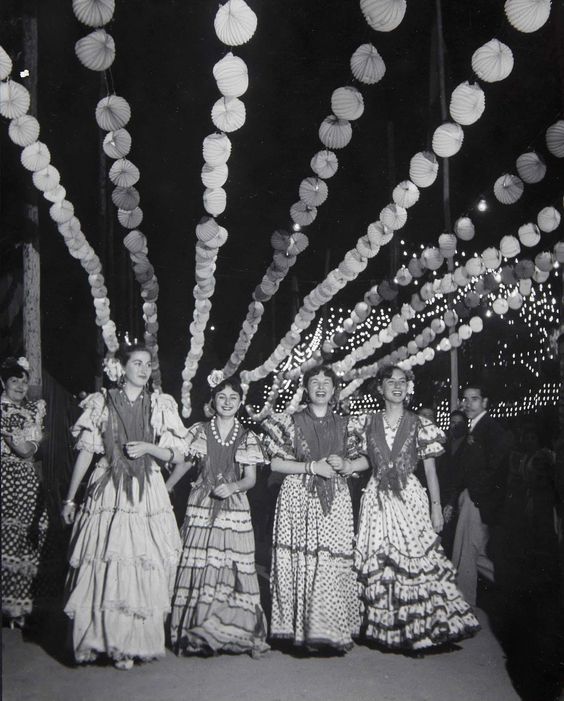
The Sevillana, formerly known as “Seguidiya sevillana,” stands as a vibrant and colorful symbol in the flamenco scene, especially during the spring season. Its origins date back to the 18th century in Seville, where it emerged as a form of popular entertainment during local fairs and celebrations.
Although Sevillanas are not strictly a flamenco style in their traditional form, they incorporate aesthetic elements of flamenco in their execution. The dance of Sevillanas is choreographed, and the lyrics are simplified to accompany the movements, yet it still retains the essence and charm of flamenco in its performance.
Fascinating Facts about Sevillana:
Unique Structure: Sevillana typically consists of four parts called “coplas.” Each copla consists of 16 beats and is divided into three sections: “pasada,” “seguidilla,” and “remate.” This structure provides a framework for improvisation and creativity within the dance.
Traditional Instrumentation: The music accompanying Sevillana is usually composed of guitars, clapping, and castanets. Guitars provide the rhythmic and melodic base, while clapping and castanets add a characteristic rhythm that drives the dance.
Diversity of Lyrics and Themes: The lyrics of Sevillanas cover a wide range of topics, from love and passion to everyday life and cultural traditions. Some Sevillanas are cheerful and festive, while others explore deeper and more melancholic emotions.
Regional Styles: Although Sevillana originated in Seville, it has spread throughout Andalusia and has given rise to a variety of regional styles. Each region brings its own unique interpretation of the dance, with variations in steps, music, and singing style.
Cultural Influences: Sevillana has been influenced by a variety of cultures throughout its history. The music of Sevillanas has its roots in the seguidilla manchega, which provides its basic structure. However, over time, it has evolved into a more flamenco style due to the influence of other musical forms present in Andalusia. As for the dance, it is inspired by the bolera school, although it has later adapted to the flamenco style.
Sevillana in Andalusian Spring:
During spring, Sevillana takes on special significance in Andalusian culture. It is during this festive season that numerous fairs and pilgrimages are celebrated throughout the region, where Sevillana becomes the undisputed protagonist of the celebrations.


